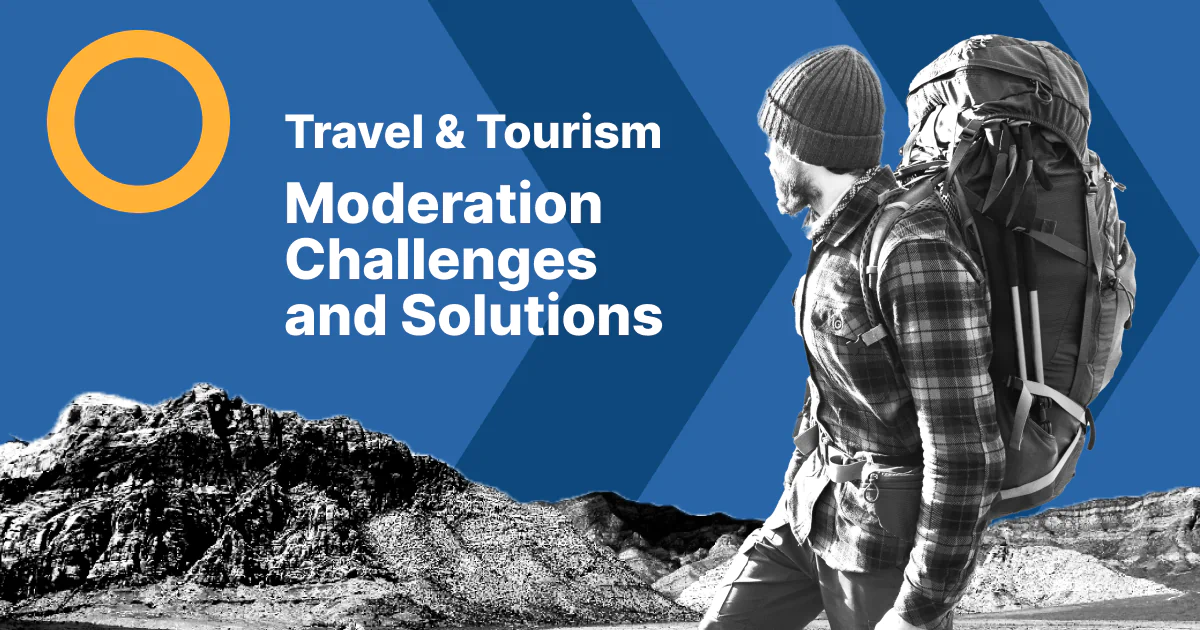The support experience in the travel space is often disjointed, and it shows.
In a recent UK study, airline-related services were ranked the third-worst industry for customer service. 41% of passengers reported problems with travel support in just a single year. In the U.S., complaints to the Department of Transportation more than doubled in 2023—and that number keeps climbing.
With travel companies consistently scoring low on consumer sentiment reports, the industry has struggled to meet demand. This has all happened despite countless infrastructure upgrades to the way we travel today.
It's not hard to see why these support standards can be tough to meet. Today's travelers don't just want better service—they expect it. The very nature of travel means that you're in an unfamiliar situation with very few–and often expensive–solutions to problems. Travelers want support that's instant, personalized, and efficient so they're not left guessing on their trip.
Despite that, many companies in the travel and tourism industry haven't solved these issues. Companies are still catching up to where travellers have already been waiting for the last few years. Here's why support hasn't been keeping pace and how the industry can fix that
What the Modern Traveler Expects from You
Responsiveness Across Channels
87% of travelers now expect to book trips entirely online, and 76% want to do it via mobile platforms that are fast and intuitive.
Once they're traveling, the expectations go up. When they reach out for help, 82% of people now expect real-time answers via live chat or social DMs—especially when things go wrong. And the speed of response has a direct impact on trust. 67% of customers say fast replies change how they feel about a brand.
Many businesses have been aware of these facts for a while. From expanding contracts with call centers to deploying chatbots across channels, addressing volume has been a key focus in the industry for some time now.
Personalized Support
However, these stats don't tell the whole story. Focusing exclusively on higher response times is a quick way to alienate travellers.
Travellers don't want a generic response, regardless of whether it comes in five minutes or five seconds. They want updates that make sense, in a voice that feels real, from a team that's actually listening. 86% say they'd pay more for a better service experience—proof that service quality is beating price in today's market.
Where Airports and Tourism Boards Are Falling Behind
Over-Reliance on Automation Jams the System
Automated replies and chatbots are everywhere, but for many, they've only made the experience worse. 47% of travelers say they have been frustrated by chatbot responses that didn't solve their issue. And 77% still say they prefer speaking to a real person, especially in stressful moments.
These risks go beyond just brand image. Many of these LLM-based chatbots are bleeding-edge, unproven technology. Early adopters end up paying the cost. Without proper implementation and monitoring, bots can be a liability.
In one case, a chatbot gave a traveler incorrect information about bereavement fares. The courts determined that it was still a representative of the company and held the company liable.
Fragmented Support Channels Create More Problems
Many support systems across the industry are still siloed. Airport staff handling social channels aren't always connected to the visitor services desk. Destination marketers might use platforms different from local tourism representatives. The result: Travelers bounce between teams and channels, forced to verify the exact same information over and over again.
Meg O'Keefe, VP of Airline Solutions at Amadeus, succinctly summarized the problem. "Not only do passengers find this annoying, as they constantly have to provide the same information only to start from scratch again, but it also hinders airlines' ability to deliver personalized experiences across multiple channels."
This means that, for travellers, support often feels exhausting and impersonal, which are the last things you want to be feeling on any trip.
How to Meet Traveler Expectations in 2025
Fixing support doesn't mean starting from scratch. For example, automation is here to stay and won't be going away. What it does mean is updating how you use what you already have. Here are a few ways you can build a successful support system for travelers, modeled on how people actually travel now.
Build a Rapid-Response Social Team
Don't wait for a post to go viral before you respond. The best-run airports and tourism boards don't just monitor social—they treat it as frontline support.
That means having a proactive social support team ready to engage in real-time, not with canned responses or redirects, but with genuine answers and the authority to resolve issues on the spot.
To achieve this, you'll need to provide them with tools, training, and escalation paths so they can handle routine inquiries and know precisely when and how to escalate complex situations. Find partners who can provide exactly that kind of support team for your needs or vendors that can help you implement the systems you'll need to do it yourself.
Optimize Your Automation Process
You wouldn't ask a flight attendant to fly the plane or your accountant to manage your IT—so why set up advanced automation without an expert who knows how to use it?
Too often, automation is sold as a "set it and forget it" solution. Drop in a chatbot, upload all your support documentation, reduce shifts, and hope for the best. That approach fails fast.
A professional implementation team understands where automation helps—and where it hurts. They know how to build workflows that use bots to handle high-volume, low-stakes questions (parking info, hours, directions) and how to trigger human takeover when things get complex or emotional. You'll want to assemble a team that understands both automation and support, rather than constantly passing the buck between the agents and the dev team.
Done right, automation makes support faster, smarter, and more efficient. Done wrong, it breaks the experience. It's never been about human vs machine. It's always about the humans implementing the machine and supporting the underlying systems.
Update to Systems That Can Scale and Sync
When a traveler messages you on Instagram, follows up by email, and still ends up calling, everything should connect. You never want frustrated customers who feel like no one's really listening.
That's where unified platforms like Zendesk or Intercom come in. They bring every channel—chat, email, phone, social—into one system. So agents have the full picture, escalations move faster, and travelers don't have to explain the same issue three times.
And if you're looking to cut out the learning curve? Bring in a support partner who knows how to build it out for you. Just like with automation, there are plenty of experts who can help you launch with custom setups that actually work for your channels, your travelers, and your goals.
Make Travel Feel Easy Again
Today's travelers don't want to be bounced between bots, call centers, and help desks. They want support that shows up where they are—online, in real time, and on their terms.
Companies that modernize their digital engagement strategies will build more trust, smoother travel experiences, and stronger brand loyalty. The rest? They'll keep trending, but for the wrong reasons.
Now's the time to close the gap—and ModSquad can help you do it right.



